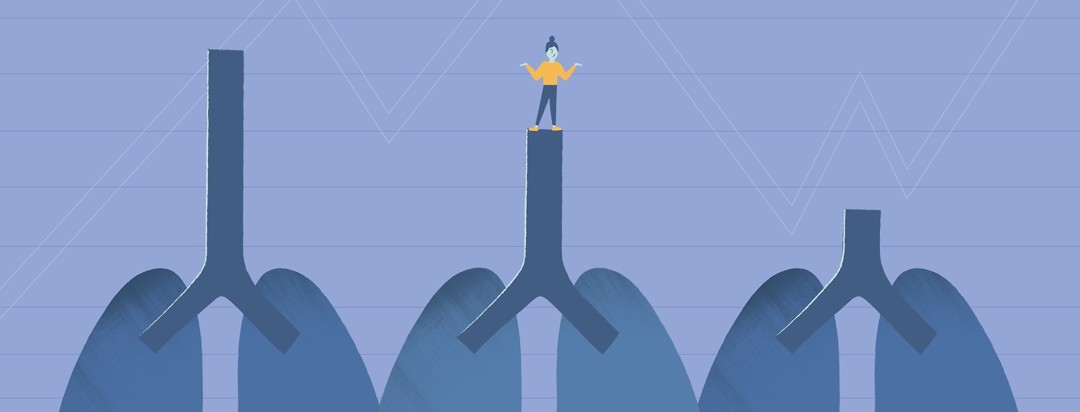What's Next
Editor's note: This is part 2 of a three-part series. Part 1 can be found here and part 3 here.
There are two other tests that I would like to mention, as well as the use of the pulse ox:
- 6-minute walk: Whenever I took this test, there were 2 pylons set up at either end of a hallway. There was a technician who observed my walk for the six-minute duration (if I could go that long, and thankfully I could). During the walk, I could pick my own pace. Frequently I would hear: “Keep your head up and walk straight, open your eyes”. This would help me from my reaction to the dizziness.
- ABG (arterial blood gas) blood test measures the SPO2 (oxygen) level in your blood as well as the CO2 (carbon dioxide) level. This is drawn from the wrist, as that’s where the artery is. Some say that it’s so painful they won’t let anyone do this to them again. For me and some others, it was uncomfortable but not very painful. It’s important to know that each of us has our own tolerances. This is an important test.
- Pulsoximeter (pulse ox) is a machine that measures oxygen levels and heart rates. This can go on your finger, toe, or even an earlobe. You likely won’t get a reading if the place you are going to put the pulse ox on is cold. I always have to warm up my hands. For accuracy, if the pulse ox is to go on fingers or toes, you should remove fingernail polish from that area.
Pulmonary function tests
I know that for some these tests are intimidating. Waiting for the results can be more so, especially the pulmonary function tests. Have you had people ask what stage you are in? The results of the PFT will provide that information.
The pulmonary function test gives some results, as does the FVC (forced vital capacity) test. This is when you took a deep breath and exhaled during that first 1 second from your FEV1 test.
- Stage 1 is Mild FEV1 where the score is 80% or greater.
- Stage 2 is Moderate FEV2, where the score is 50% - 79%.
- Stage 3 is Severe FEV3 where the score is 30% - 49%.
- Stage 4 is Very Severe FEV4 where the score is 29% and below.
The importance of stage
There is a purpose for your doctor knowing what stage you are in. This helps your doctor know how best to treat you, to know whether a medication is working, or maybe needs to be changed. It’s important to know if you are still able to do things such as exercise, or if there is a change in your ability. Maybe it’s time to consider oxygen. Sometimes your doctor might need to know how well you are coping. This will be explained better in Part 3, “What Does It All Mean?”
There is a purpose for you to know what stage you are in also. Before I go farther with this, it's important to help you realize that this information can be helpful to you. This is not to make you concerned, depressed, or wondering when you might die. This lets you know where you stand physically.
Things that can help
One person might do well at 50%, where another person might struggle more with shortness of breath. Maybe you need exercise. If there is a pulmonary rehab in your area, talk to your doctor about joining. Maybe there is a Better Breathers Club, which would be a great face to face group with others who are also looking for support with lung issues.
If you aren’t seeing a pulmonologist (lung doctor), maybe it’s time to do so. I know people who are fairly active at 18%, and another at 8% who is struggling more now. Yes, 18% and 8% are accurate. It’s important to remember though, that everyone is different.
How do they do it? Actually, these are things that your doctor is likely encouraging you to do as well.
- Exercise
- Nutrition
- Medication as prescribed
- Oxygen, use as prescribed. Yes, oxygen is prescribed. It is a drug.
- Support System - this can be done face to face, via telephone, or online.
We are unique
Always remember, we are unique in our disease. We have different family histories, different allergies, and health issues. Never compare yourself to anyone else, nor expect the same medical treatments to have the same outcome.
Never, ever, ever quit!
Watch for Part 3 “What Does It All Mean?”

Join the conversation